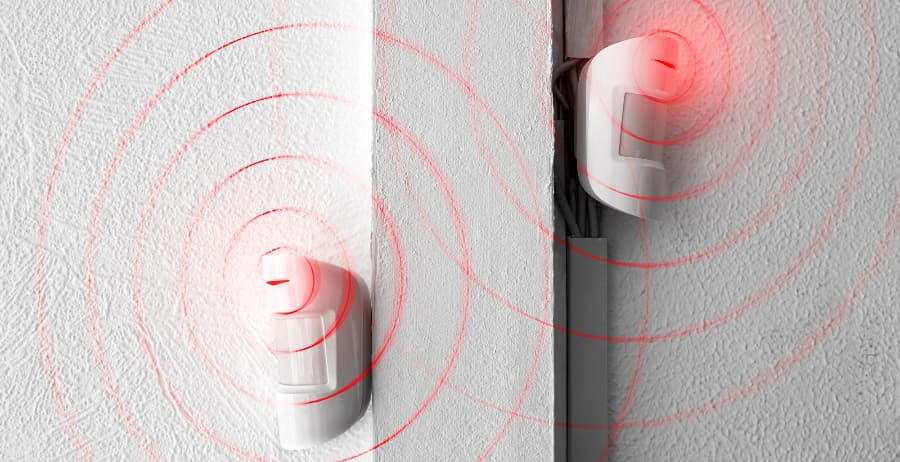How to reduce motion sensor false alarms in your Denver home

Motion sensors are crucial elements in a comprehensive home security installation, as they’ll alert you whenever an uninvited guest is sneaking around your house. Regrettably, they’re also susceptible to false alarms, causing annoyance and lost sleep for Denver homeowners. If you’re looking for solutions, review our tips on reducing motion sensor false alarms.
What initiates motion detector false alarms?
The bulk of home motion detectors use passive infrared (PIR) technology to detect movement. They sense shifts in infrared radiation within their detection zone and can tell when someone is moving by their heat signature. False alarms are typically initiated by:
- Pets jumping on couches or countertops
- Direct sunlight streaming through a window
- Various heat sources, such as vents and fireplaces
- Rapid temperature or humidity changes, which cause devices to be hypersensitive or unresponsive
Microwave motion sensors are another common option that detects motion by continuously broadcasting and analyzing electromagnetic waves. Called active motion detectors, they spot movement due to changes in the reflected signal. Any unanticipated activity, like curtains swaying when your HVAC fan kicks on, can trigger an alarm.
Suggestions for decreasing motion sensor false alarms at your Denver home
Aside from losing sleep, motion sensor false alarms can be even more disruptive as they may desensitize you to actual threats. Moreover, frequent false alarms may become a frustration for emergency providers and may impact response times in the future. Luckily, you can help circumvent them by adhering to these recommendations:
- Investigate the sensitivity parameters of your sensors and adjust to your furry friend’s behavior and size.
- Even when you have animal-friendly motion sensors, it’s advisable not to aim them at high-activity places like food bowls.
- Avoid directing motion detectors at windows that receive intense sunlight.
- Make sure areas are adequately insulated to minimize temperature shifts.
- Periodically dust and wipe down devices to keep sensors clear.
- Monitor batteries and swap out as needed. Certain devices will even let you know when batteries are low.
- Get them installed professionally to ensure correct positioning.
You could also choose dual-technology devices that use both active and passive sensors to sense motion, leading to greater accuracy.
How to utilize motion sensors in your Denver smart home?
Installing motion sensors in an automated smart home is a fantastic way to enhance your convenience and safety. You’ll have the ability to do the following:
- Receive automatic updates on your smartphone any time motion is detected. You could also use them to alert you when your children come home from school.
- Configure indoor cameras to record when a motion sensor triggers.
- Alter lighting or temperature settings according to whether people are home. This capability can help reduce energy costs.
Top smart home motion detectors, like those installed by Vivint, continue to employ artificial intelligence (AI) to more accurately detect real threats and decrease false alarms.
Create your Vivint smart home with reliable motion sensors
Get the best motion sensors in Denver from Vivint when you customize your fully functional smart home. Our devices are pet-sensitive and allow you to initiate various home automation actions. You’ll also enjoy a five-year battery and automatic smartphone updates. Call (720) 807-3060 today to design your system.